Jay-Z Is A Genius
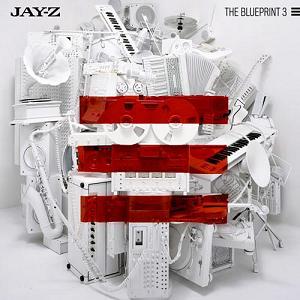
Q: What do the three red lines mean? A: Wrong.
The three red lines mean "3," as in "Blueprint 3." Ok, so why aren't they blue, like Blueprint? You should now start to suspect that what the lines mean isn't the right question (the medium is the meaning.) The question is, why are they there?
Look at the cover again. Making the rounds is this video, it is the making of the cover of Jay-Z's new album, Blueprint 3. Read that sentence again and reflect before you watch the video.
It shows the musical instruments being stacked, the sculpture being constructed. Then, at the end, the designers apply red color onto the sculpture itself.
So while it looks the lines were digitally added, and it would have been much easier to digitally add them, they're actually on the instruments. They're actually real.
II.
Some have seen resemblances/sampling from such pictures as these:
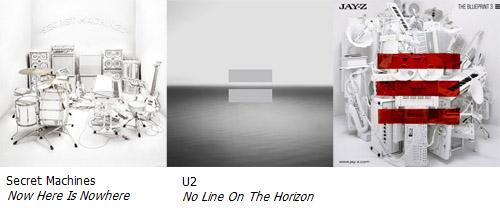
(From idolator)
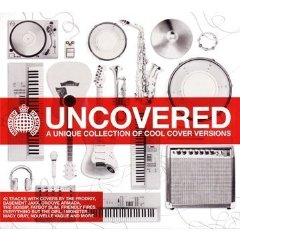
or this one:
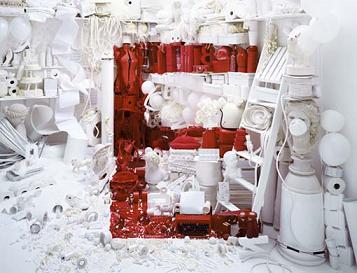
The "E" is the most relevant, as it was the "inspiration" for the cover. By inspiration, I mean it was created and shot by the same photographer, Dan Tobin Smith.
But as you saw in the video, this cover is not a "sampled" version of those pictures, it's not cut, paste, and recolor. It may look like, be inspired by, those others but-- just like he doesn't sample "hey hey hey, good bye" but actually sings it-- everything you see and hear is strictly Jay-Z. Jay-Z is saying, I'm a real artist. I don't take shortcuts. This is anti-Photoshop, death of the thumbnail. This image was entirely assembled, it took a long time, it took a lot of work. Even the red lines are real, not CGI.
So now the point of releasing a "Making of The Cover" video becomes clear: it's to show you how authentic he is.
The red lines are there to lead you to discover that they are actually there.
III.
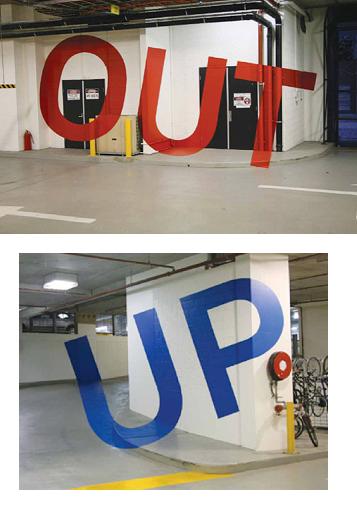 from Axel Peemoeller
from Axel Peemoeller
Look closely/take my word for it, the colors are not painted/photoshopped onto the photograph, but are actually painted into the walls/ground/railings/etc. Cool, huh? It's alright, you're allowed to like it, you don't have to be metafilter smug all the time.
While this style of art has been around for centuries, today it carries a different implications: it is always conscious of the existence of CGI. Whatever else the art says or is, it is also saying, "it looks like CGI, but it isn't." Usually CGI is used to fake reality, but in this case the very point of the realism is to make you think it's CGI, so that you can be awed by the fact that it isn't. Its authenticity is reinforced by the work you have to do to discover it. "Holy crap, that's real!"
To repeat: this is something real that is designed to look fake.
IV.
What does it say, however, that this technique is regularly found in commercial art?
It says the same as Jay-Z wants it to say: "if this packaging art is real, then for sure the product inside is completely real. And the artist is 110% authentic."
But this kind of authenticity is the most manipulative kind of fakery, because "the illusion" masking the reality only occurs if seen from one specific perspective, chosen by them.
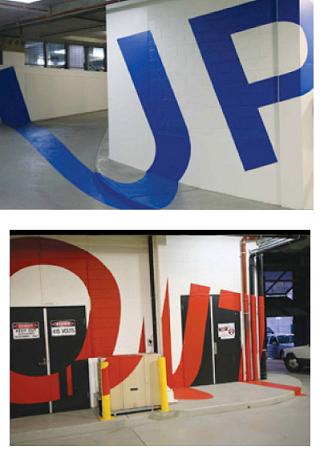
From any other perspectives decided by them, you don't see the illusion.
The illusion masking the authenticity-- the red lines that look CG'd, the illusion you're supposed to work through to appreciate the authenticity even more-- never materializes. All you're left with is the one level of real, and it is real boring.
Here's what is absolutely vital to understand: for the commercial part of the art to be effective, not everyone can be in on the trick. You need some people who say, "what's the big deal? Some idiot painted some colors on the walls. I don't get it." You need them so that the people who see it from the right perspective are motivated to dig deeper. "Wait, are you serious?!" You've created us vs. them. You've branded it.
Our postmodern society thinks it is clever for always looking deeper, for knowing there are always two levels. It "knows" appearances are lies, it knows the real truth is beneath the appearances. It tries to uncover.
We're not as smart as they are. Commercial art, Jay-Z, all of TV, all of the news, reverse the order of the levels. They hide the lie they want to tell you one level deeper, let you dig for it. And when you find it, after all the work, you accept that it must be the truth. "Backstage", "behind the scenes", "the making of", "investigative reporter", "obtained documents", "leaked"-- now we're getting to the truth!
You're not.
Commercial art of this kind works because it is able to control the perspective. You think you're making your own judgment about what you see with your own eyes, but it has already been decided how you will see it, why you will see it, in what context... so that you "uncover" only what it wants you to uncover.
V.
If you can't understand the emo kid with black lipstick, or the white kid in baggy jeans flashing gang signs, or Jay-Z pretending to be Italian, or any of a billion different obviously fake identities-- and if you can't understand why, despite the obviousness of the fakery, some girls who are not complete idiots fall for it-- it's because you're not seeing his fake identity from the right perspective. He's showing the fake symbols of something (toughness, intellect, etc) so that you try to look deeper, and whoever responds to what those symbols mean (toughness, intellect, etc) will do so.
He's dressing himself in red lines, tempting you to see if they're real or not.
If you are tempted to look more deeply (if you're watching it, it's for you)-- like the smitten girl does-- you'd see this appearance first, then through it: "if you got to know him, you'd see he's really a...!" And then you'd pat yourself on the back for having intellectual courage to not judge by appearances! But you've been fooled by the commercial art illusion, thinking that because you saw through the illusion, therefore the deeper level must be authentic.
Those who don't come to it from exactly the right perspective are infuriated, "this guy is a douchebag!" You think you see something more real than she does, but you aren't supposed to see more deeply-- she is. You are supposed to be infuriated-- that's why she looks more deeply. She doesn't like him, she likes what liking him says about her. She likes what your hating him says about her.
"How the hell come she can't see through this poser?" She does see through it, you don't. She sees something fake, then something "real" underneath, and falls for him; you see something fake, stop there, and hate him.
That's exactly what he wanted, both times.
That's what Jay-Z wants, too.
We are all commercial art.
-----
------
http://twitter.com/thelastpsych

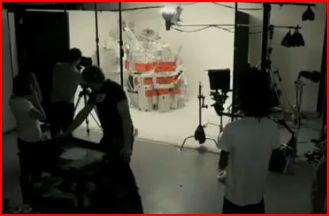
41 Comments